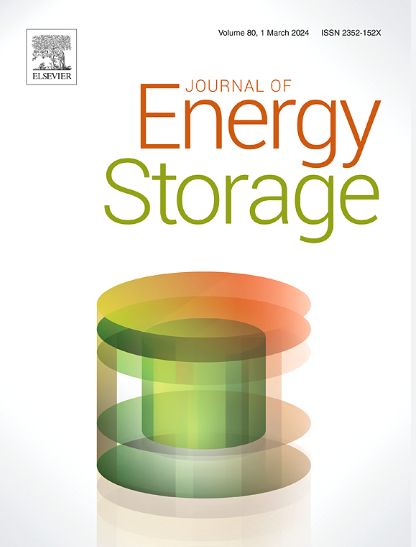提高pcm集成散热器的热效率:洞察t形翅片和pcm -空气界面形态
IF 8.9
2区 工程技术
Q1 ENERGY & FUELS
引用次数: 0
摘要
本文对相变材料(PCM)在矩形铝壳包围的t形铝翅片散热器内的熔化过程进行了数值研究。该设计包括一个由空气层覆盖的内部PCM区域,创建一个动态空气- PCM接口,这是影响热性能的关键方面。利用流体体积(VOF)模型,仔细跟踪了空气- pcm界面的演变,揭示了其在熔化过程中传热机制中的关键作用。这项工作的重点是未探索的t形铝翅片配置对热特性的影响。研究了两个几何参数:t形翅片的水平长度与垂直长度的纵横比和铝壳的底宽壁高比。值得注意的是,0.67的翅片展弦比可以有效地减缓系统温度的升高,而2.29的机匣展弦比则可以显著延缓系统温度的升高。这些结果强调了空气- pcm界面形态在增强自然对流和热调节方面的变革性影响。适当优化的t型翅片结构不仅提高了传热性能,而且延长了温度控制时间,为pcm散热器提供了显著的优势。研究结果表明,这种设计在潜热热能储存系统中具有潜力,需要先进的热稳定性和效率。本文章由计算机程序翻译,如有差异,请以英文原文为准。
Enhanced thermal efficiency of PCM-integrated heat sinks: Insights into T-shaped fins and PCM–air Interface morphology
In this study, the melting process of a phase change material (PCM) within a heat sink featuring T-shaped aluminum fins enclosed by a rectangular aluminum casing is numerically investigated. The design includes an interior PCM region overlaid by an air layer, creating a dynamic air–PCM interface—a critical aspect influencing thermal performance. Using the volume of fluid (VOF) model, the air–PCM interface evolution is meticulously tracked, shedding light on its pivotal role in heat transfer mechanisms during the melting process. The focus of this work is the unexplored impact of T-shaped aluminum fin configurations on thermal characteristics. Two geometric parameters were examined: the aspect ratio of the horizontal to vertical lengths of the T-shaped fins and the bottom width–wall height ratio of the aluminum casing. Notably, a fin aspect ratio of 0.67 was found to effectively moderate the increase in system temperature, whereas a casing aspect ratio of 2.29 significantly delayed the increase in temperature. These results highlight the transformative influence of the air–PCM interface morphology in enhancing natural convection and thermal regulation. Properly optimized T-shaped fin structures not only improve heat transfer performance but also extend the temperature control duration, offering significant advantages for PCM-based heat sinks. The findings demonstrate the potential of this design in latent heat thermal energy storage systems requiring advanced thermal stability and efficiency.
求助全文
通过发布文献求助,成功后即可免费获取论文全文。
去求助
来源期刊

Journal of energy storage
Energy-Renewable Energy, Sustainability and the Environment
CiteScore
11.80
自引率
24.50%
发文量
2262
审稿时长
69 days
期刊介绍:
Journal of energy storage focusses on all aspects of energy storage, in particular systems integration, electric grid integration, modelling and analysis, novel energy storage technologies, sizing and management strategies, business models for operation of storage systems and energy storage developments worldwide.
 求助内容:
求助内容: 应助结果提醒方式:
应助结果提醒方式:


